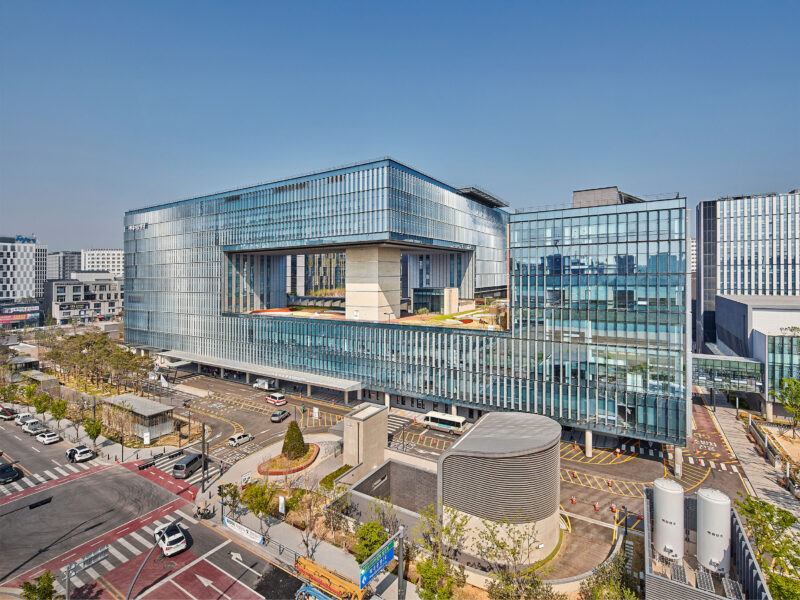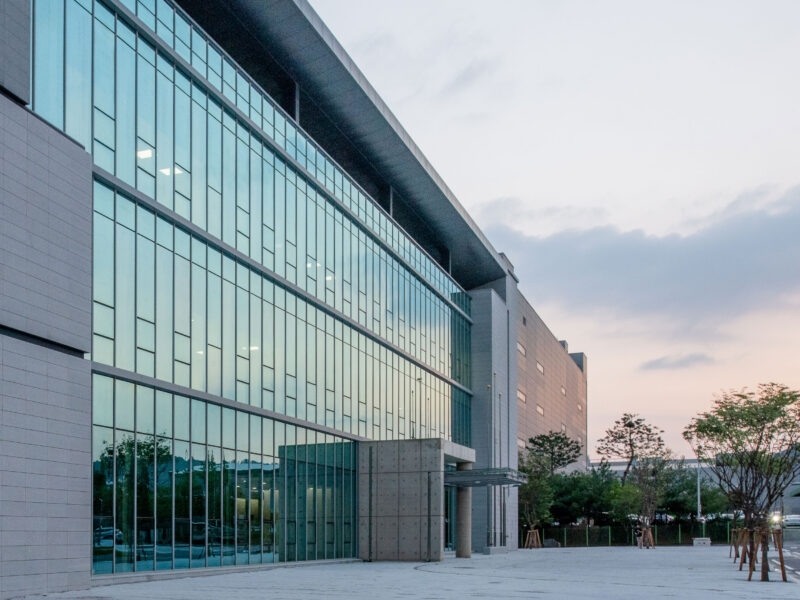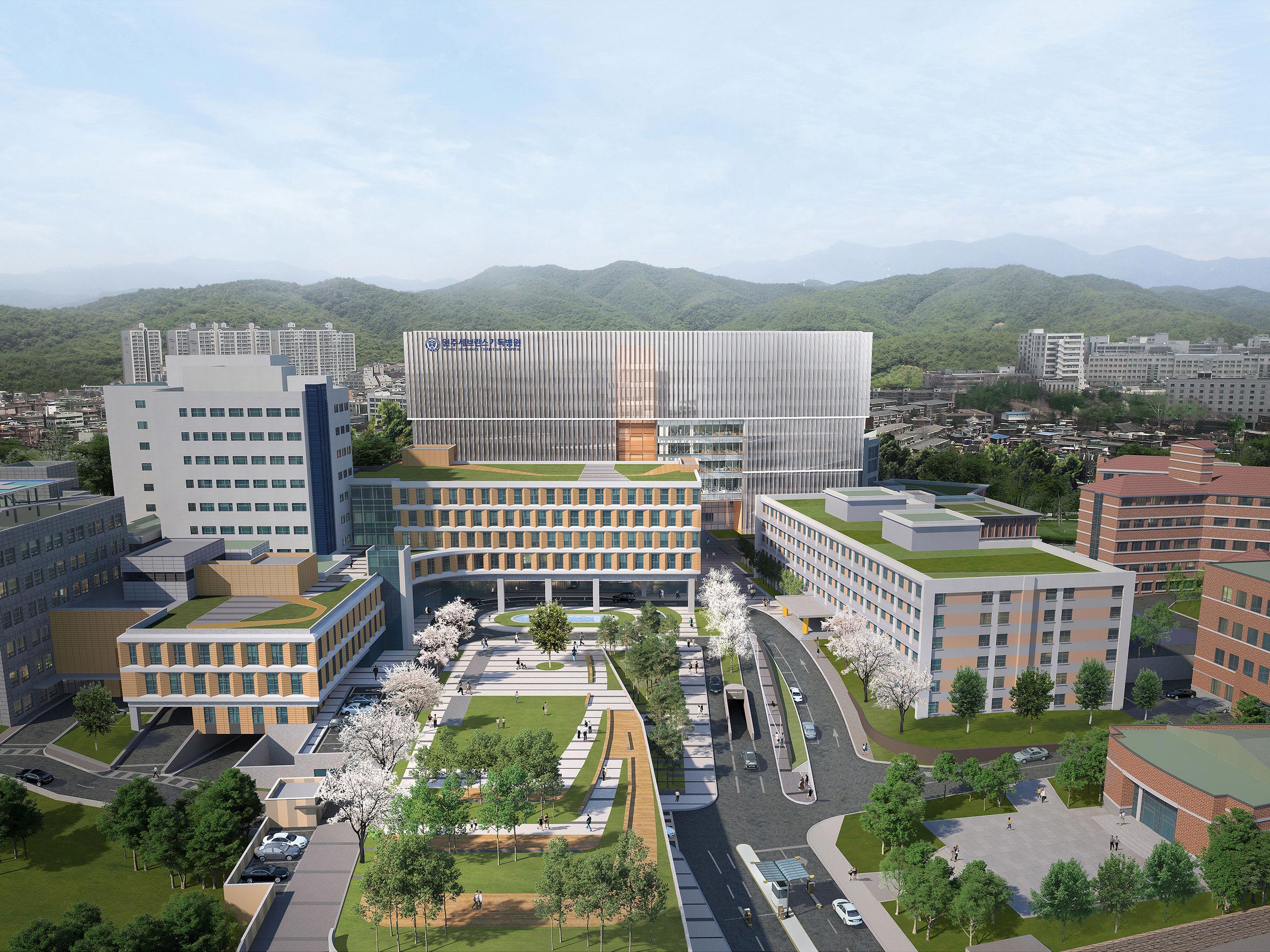
Since its opening in 1959, Wonju Severance Christian Hospital has continued to grow through multiple expansions. As with many long-established medical campuses, the result of such successive additions led to facilities being spatially fragmented, reducing operational efficiency, complicating visitor circulation, and causing congestion in external spaces due to vehicle traffic.
The new hospital, to be located at the center of the campus, was envisioned to play a proactive role — not merely accommodating the required number of beds and medical equipment, or fitting neatly among the existing buildings, but establishing a new order that revitalizes the entire complex. The design sought to fundamentally integrate dispersed infrastructure such as parking, circulation, and building services; unify fragmented medical functions and flow paths; and harmonize the heterogeneous appearance formed across different periods of development to create a new symbol for Wonju Severance Christian Hospital. The integration of infrastructure, function, and symbolism became the core concept of the project.
Beyond these physical considerations, the project also aimed to set a new standard for general hospitals in the post-COVID era. As COVID-19 spread globally in early 2020, the design team drew on lessons from previous outbreaks such as SARS and MERS to research the impacts of infectious diseases on healthcare facilities and appropriate response strategies. The distributed layout of nursing stations and support areas, separate controllable lobbies for visitors, dedicated elevators and circulation routes for medical staff, and reinforced infection control at entrances and patient rooms — all applied in this project — have since influenced subsequent healthcare planning practices.
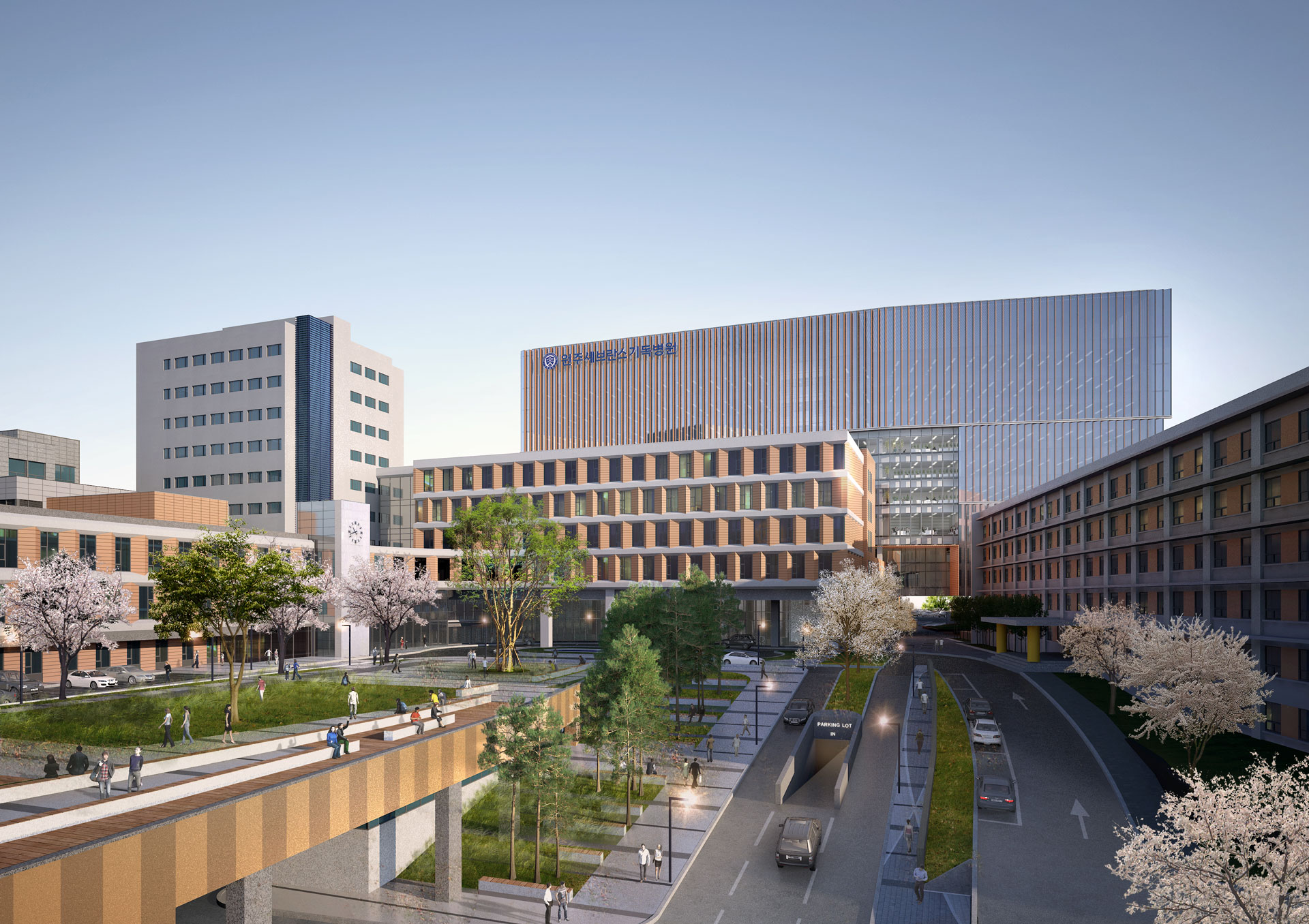

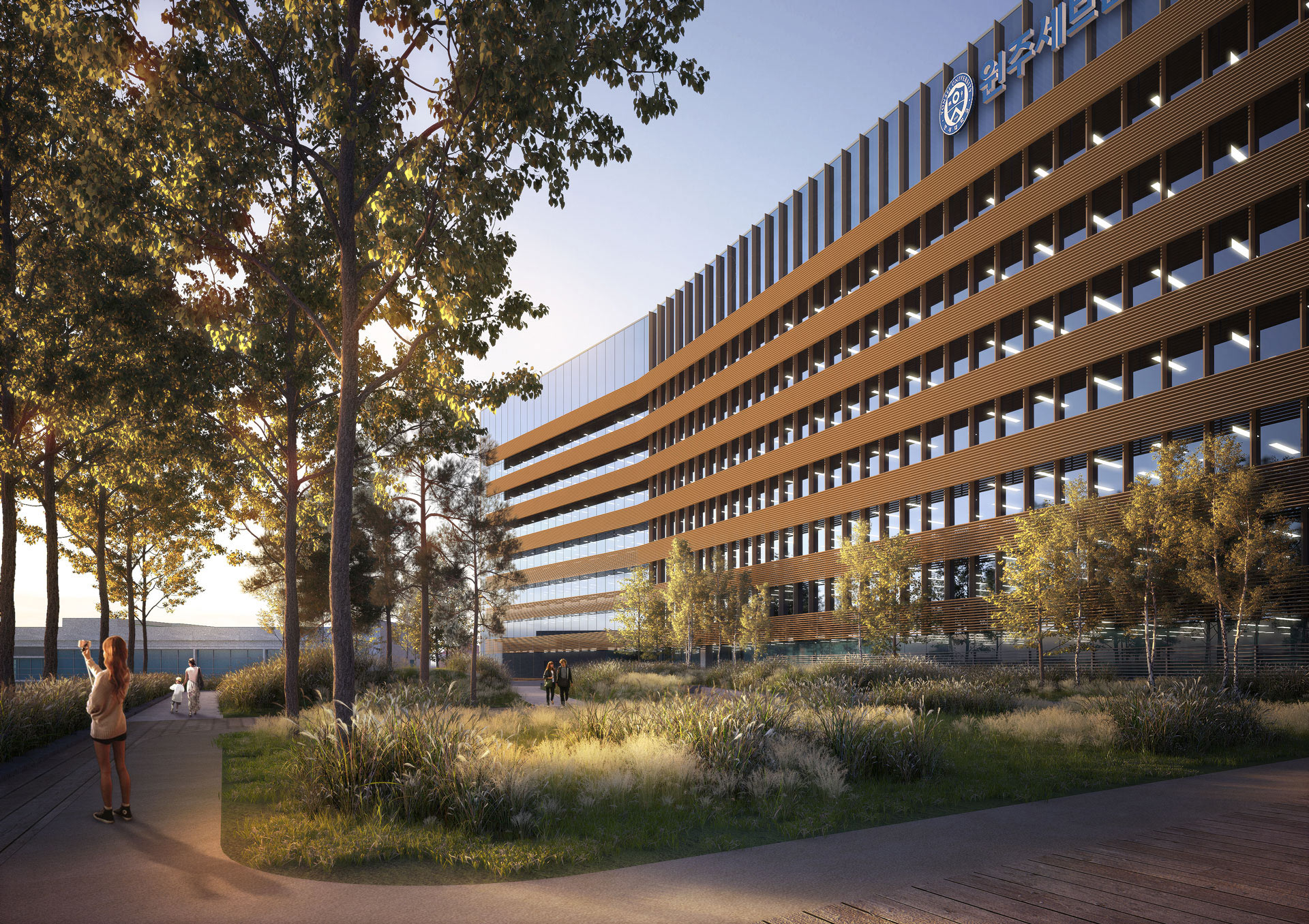
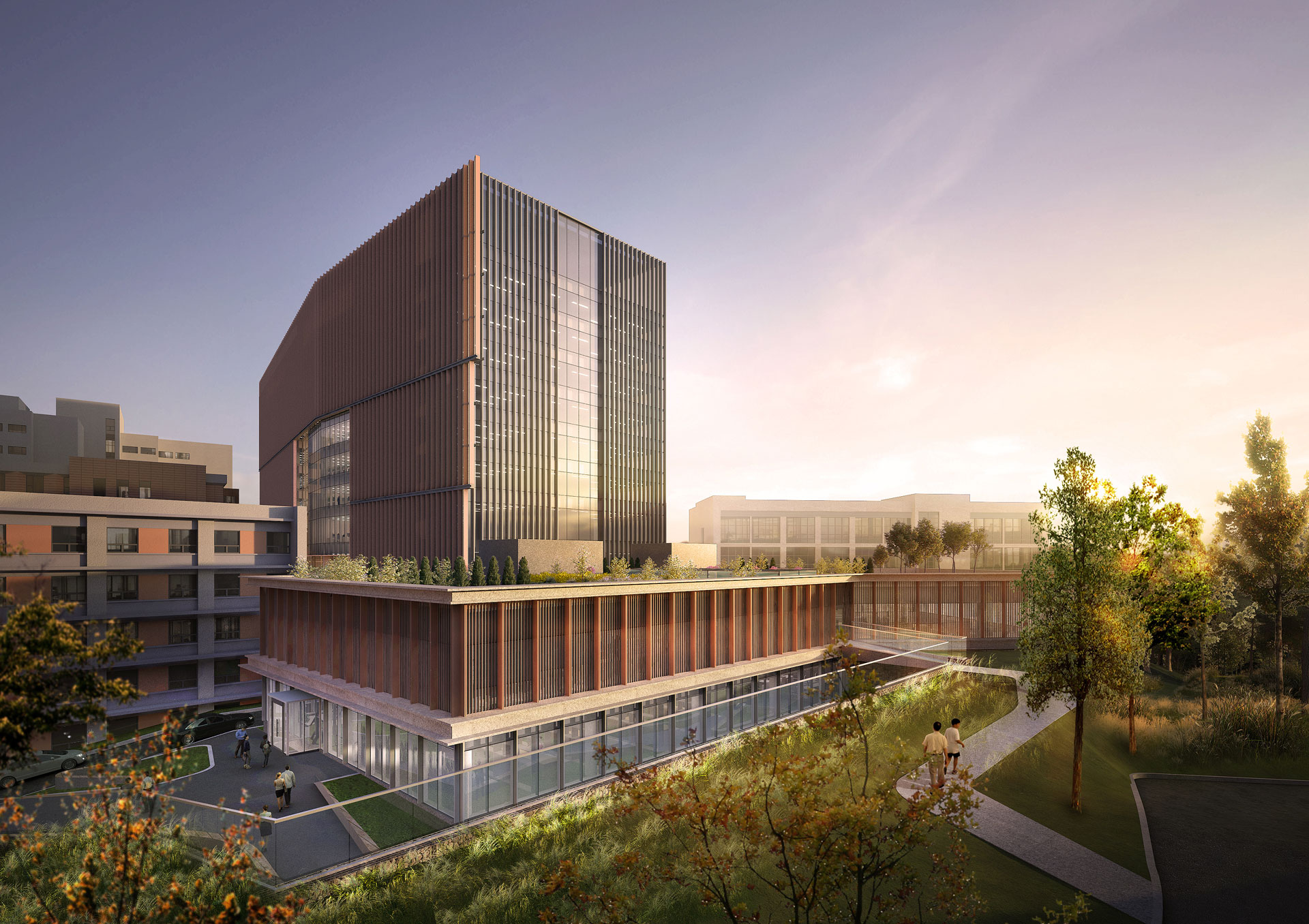
-
Status
In Progress
-
Client
Yonsei University Wonju Hospital
-
Program
Healthcare
-
Design Year
2020
-
Location
Wonju-si, Gangwon-do
-
Site area
75,600.00m2
-
Gross Floor Area
67,369.46m2
-
Building Area
7,980.76m2
-
Number of Levels
B4, 11F
-
Participants
Since its opening in 1959, Wonju Severance Christian Hospital has continued to grow through multiple expansions. As with many long-established medical campuses, the result of such successive additions led to facilities being spatially fragmented, reducing operational efficiency, complicating visitor circulation, and causing congestion in external spaces due to vehicle traffic.
The new hospital, to be located at the center of the campus, was envisioned to play a proactive role — not merely accommodating the required number of beds and medical equipment, or fitting neatly among the existing buildings, but establishing a new order that revitalizes the entire complex. The design sought to fundamentally integrate dispersed infrastructure such as parking, circulation, and building services; unify fragmented medical functions and flow paths; and harmonize the heterogeneous appearance formed across different periods of development to create a new symbol for Wonju Severance Christian Hospital. The integration of infrastructure, function, and symbolism became the core concept of the project.
Beyond these physical considerations, the project also aimed to set a new standard for general hospitals in the post-COVID era. As COVID-19 spread globally in early 2020, the design team drew on lessons from previous outbreaks such as SARS and MERS to research the impacts of infectious diseases on healthcare facilities and appropriate response strategies. The distributed layout of nursing stations and support areas, separate controllable lobbies for visitors, dedicated elevators and circulation routes for medical staff, and reinforced infection control at entrances and patient rooms — all applied in this project — have since influenced subsequent healthcare planning practices.






